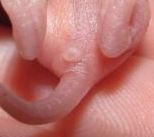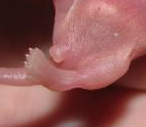What kind of litter and bedding are best?
Recycled paper pellets
This is what I use for my mice (the brand is called Breeder’s Choice here – in the US I believe it is Yesterday’s News) as it is relatively cheap, easy to obtain (the supermarket has big bags) and totally safe. There’s no toxins or aromatic oils to worry about, it’s safe to be chewed on, and my mice love digging through it. There are also types of compressed paper litter (such as Healthy Pet, or Carefresh) that looks like little chunks of mashed paper pulp. This is even softer on little mice feet, and it’s quite light, so mice tend to enjoy making tunnels underneath it if given enough.
Hemp shavings (Agrisorb)
A very popular choice with breeders, for the combination of smell control and absorbency. It looks like wood shavings, but is actually made from hemp, instead of the more common aromatic pine or cedar shavings. An added bonus of hemp is that it’s naturally anti-fungal and anti-bacterial. If you don’t mind buying in bulk, then this is a great one to try.
Chaff
A natural alternative that looks natural and smells great. I love this stuff as an additive to bedding, but I personally found it not terribly absorbent as a litter. My mice also ate a lot of it, which is not awesome for a floor-covering. Many people do swear by it, though, and it’s cheap! Wheaten chaff, if you can find it, seems to be the type people like the most.
Shredded paper
Your mice will have a great time burrowing and nesting in a big pile of shredded paper. Just make sure the edges are not sharp, and the ink used on it is not toxic. However, it’s also not terribly absorbent, so I would recommend using it in conjunction with another type of litter.
Lucerne
Lucerne can be used in the same way as shredded paper – a pile placed on top of regular, absorbent litter in the bottom, will be loved for nesting and exploration. It has a nice fresh grassy smell, and my mice can make the most amazing constructions by weaving it together. Keeps them busy for days!
Wood pellets/shavings
I would personally advise to stay away from any sort of wood-based litter product. Many people say it’s fine to use pine as long as it’s kiln-dried and dust extracted, and I have known people to do this successfully, but personally I think why risk it when there are alternatives. The aromatic oils in pine and cedar irritate the respiratory systems of small animals, and can lead to respiratory infections. These can be treated, but in some individuals it can become a chronic problem and stay with them for the rest of their lives. The only absolutely safe type of wood litter is aspen, but this can be hard to find and expensive. If your pet shop or breeder keeps their mice on shavings, ask them what type it is. If they don’t know, it’s probably pine, and any mice you buy from them will most likely come with irritated respiratory systems. I have experienced this on multiple occasions and it is notoriously difficult to cure.
Kitty litter
Clay-based kitty litter is another no-no. The clay is dusty and can irritate little mousey lungs, and they will eat it, potentially causing blockages. That said, before I knew better, I used kitty litter for all my mice (this is many years ago) and never had so much as a sneeze. Again, it’s a case of better safe than sorry – stay away from it if you can.

